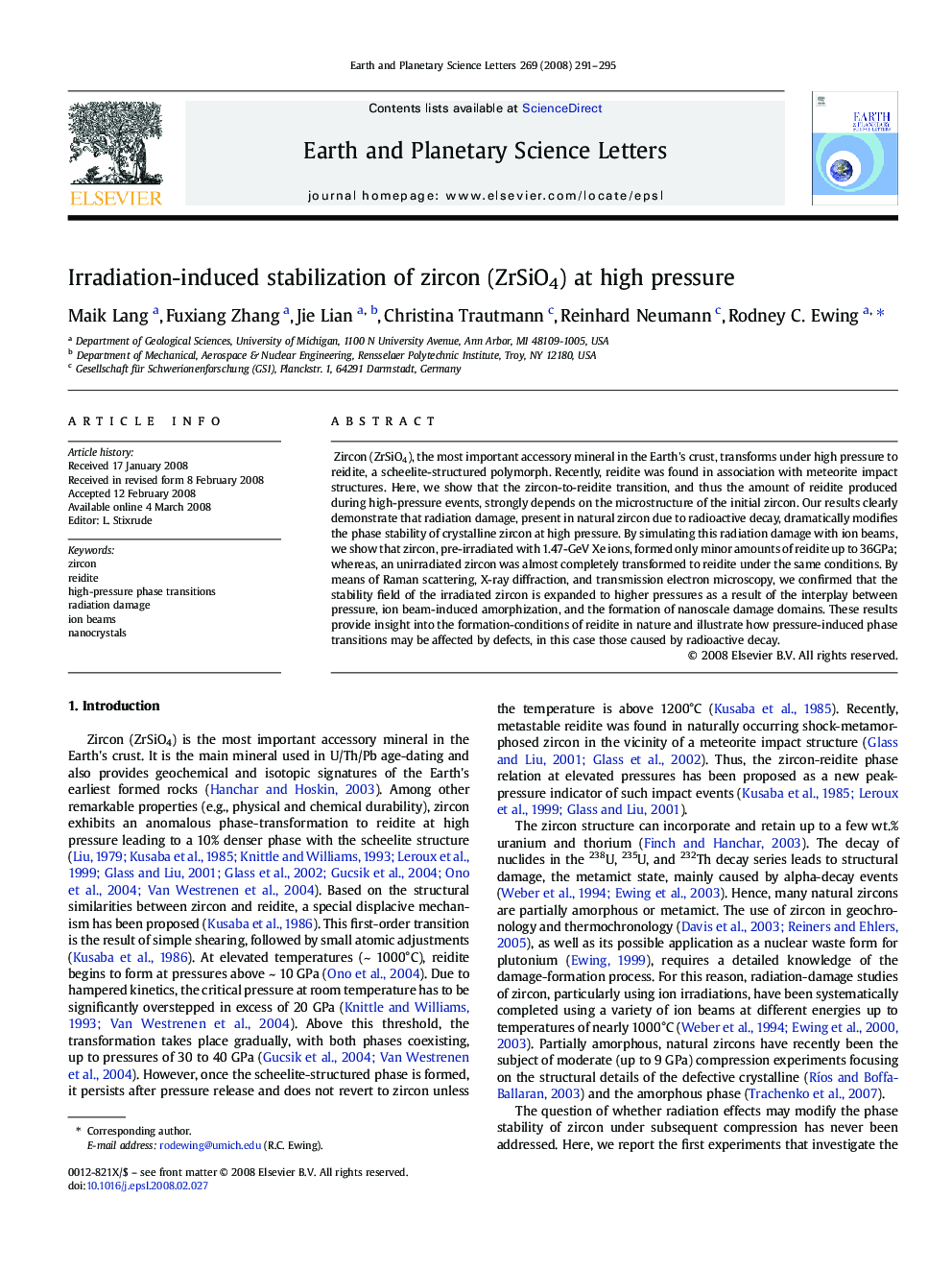| Article ID | Journal | Published Year | Pages | File Type |
|---|---|---|---|---|
| 4679941 | Earth and Planetary Science Letters | 2008 | 5 Pages |
Zircon (ZrSiO4), the most important accessory mineral in the Earth's crust, transforms under high pressure to reidite, a scheelite-structured polymorph. Recently, reidite was found in association with meteorite impact structures. Here, we show that the zircon-to-reidite transition, and thus the amount of reidite produced during high-pressure events, strongly depends on the microstructure of the initial zircon. Our results clearly demonstrate that radiation damage, present in natural zircon due to radioactive decay, dramatically modifies the phase stability of crystalline zircon at high pressure. By simulating this radiation damage with ion beams, we show that zircon, pre-irradiated with 1.47-GeV Xe ions, formed only minor amounts of reidite up to 36GPa; whereas, an unirradiated zircon was almost completely transformed to reidite under the same conditions. By means of Raman scattering, X-ray diffraction, and transmission electron microscopy, we confirmed that the stability field of the irradiated zircon is expanded to higher pressures as a result of the interplay between pressure, ion beam-induced amorphization, and the formation of nanoscale damage domains. These results provide insight into the formation-conditions of reidite in nature and illustrate how pressure-induced phase transitions may be affected by defects, in this case those caused by radioactive decay.
